Why Does Darkness Matter?
It’s easy to overlook just how busy nighttime can be from an ecological perspective. Just because the sun goes down and people tend to migrate inside our well-lit homes, doesn’t mean that wildlife and pollinators do the same thing. Some species will seek shelter to hide out and rest for the night, but that’s far from true for all species of pollinators and wildlife.
The cast of characters may change, but ecologically speaking, the night is no less active than the day. Nocturnal predators such as coyotes, foxes, and owls hunt during the night. Small mammals are often out trying to find food and mates, while at the same time trying to avoid the nocturnal predators who hunt them. Fireflies, katydids, moths, and other adult nocturnal insects are often trying to attract mates. (Again, without being eaten by predators.) Some of those moths are also pollinating night blooming flowers as they fuel up on nectar for their nightly activities.
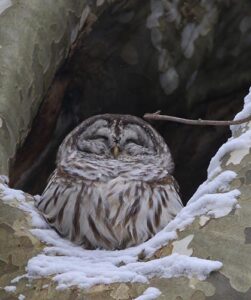
However, the cast of characters that are active at night doesn’t just include the species that we traditionally think of as being nocturnal. Many species that we typically classify as diurnal or mainly active during the day, will also be active at night for at least part of their life cycle or during certain times of year. For example, many of our favorite butterfly caterpillars, like the spicebush swallowtail caterpillar, are more active at night than during the day.
Another example of diurnal animals that are active at night during certain times of the year are many of our favorite migrating songbirds like warblers and vireos. Although these birds are typically active during the day, most of their spring and fall migrations take place at night. (If you want to learn more about bird migration, how many fly over our heads each night during the spring and fall migrations, and how we study bird migration, then check out my BirdCast podcast.)
All these animals rely on darkness. In some cases, they rely on darkness to provide cover either for stalking (in the case of the nocturnal predators) or for hiding (in the case of the potential prey). In other cases, they rely on darkness to help them navigate (such as with the migratory birds or sea turtles on the beach). And in still other cases, like with fireflies, they need darkness to find potential mates. Without darkness, or with reduced darkness, the natural activities and behaviors of these animals are interrupted and changed, often with devastating results.
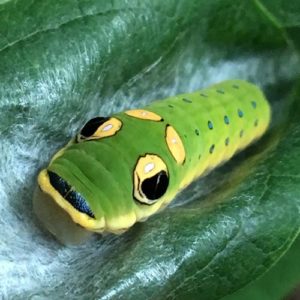
However, darkness isn’t just important for animals that are active at night. It’s equally important for animals that are resting during the night. Everyone has had a bad night’s sleep. So, you know how much that can affect you the following day. Sometimes you’re just tired and groggy if it wasn’t too bad of a night. Other times after a really bad night, you may also have a headache, be grumpy, or not be able to think as well as you usually do.
The reason you feel awful or have other side effects after a bad night’s sleep is because your circadian rhythm, or sleep / wake cycle, was interrupted and A LOT of behind-the-scenes activity is going on in your body while you sleep. Without that uninterrupted sleep, your body can’t do everything it needs to take care of during the night. And the longer you go without a good night’s sleep, the worse the impacts become.
Light or the absence of it – in other words darkness – are important cues that your body uses to help maintain its circadian rhythm. And certain wavelengths of light can be even more problematic than other wavelengths. That’s why so many resources recommend turning off mobile devices and dimming room lights several hours before bedtime.
But we aren’t the only ones that are negatively impacted by a lack of sleep or rest caused by too much light at the wrong times. For example, in 2022, I had a podcast conversation with Murry Burgess who was studying the effects of light pollution on barn swallows at North Carolina State University. Her research showed that barn swallow nestlings exposed to light pollution didn’t grow as fast, had higher blood sugar levels, and generally weren’t as healthy as their counterparts who were in areas with more natural darkness. The adult barn swallows nesting in areas with light pollution also tended to raise fewer clutches each season than their counterparts who nested in darker areas.
Darkness, therefore, is extremely important for a wide variety of animals and plays many different, and often overlooked, roles in our ecosystem. Unfortunately, we’re losing our darkness to light pollution.
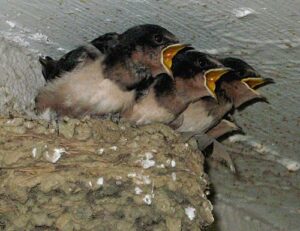
What is Light Pollution?
Simply put, light pollution is all the “extra” light we put into the night sky. This extra light comes from streetlights, porch lights, electronic billboards, spotlights, windows (in skyscrapers as well as individual homes), and a wide variety of other sources. Yet much of that light, at least 30% for the U.S., is wasted. In other words, it is producing glare or simply being lost up into the sky, not helping us see the things down on the ground that we need to see.
Because of all the wasted light, nearly 80% of North Americans can’t see the Milky Way from their homes according to a 2016 study. A more recent study that was published in 2023 found that the amount of skyglow, or how bright the night sky appears due to light pollution, increased by 10.4% in North America between 2011 and 2022. That’s significantly more than was recorded for Europe or the rest of the world on average.
Light pollution is worse around big cities but exists even in many rural areas. This is especially true in the eastern U.S. where there are just more people, more houses, and more small towns compared to parts of the western U.S. I’ve seen some beautiful night skies at various parks in the eastern U.S., but even the best of those was nothing compared to the night skies in parts of Utah when Mom and I were visiting the National Parks in that region several years ago. It was also amazing how far away you could see some of the cities at night simply by the glow they produced on the horizon.
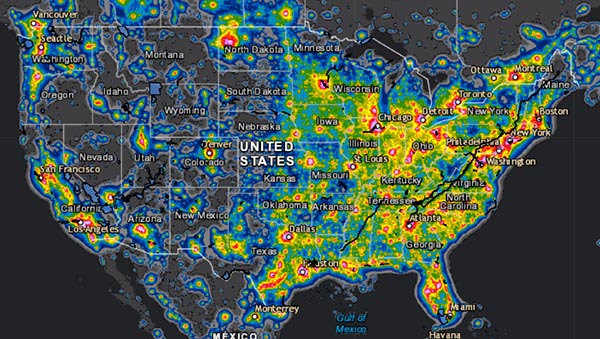
But We Need Those Lights….
Yes, in today’s modern societies, we need streetlights and other sources of light at night for a variety of reasons, including for human safety. But we also need darkness – for ourselves and for the other organisms that share this world with us. So, it’s about finding a balance, not about getting rid of everything. And in my opinion, the easiest way to start finding that balance is to look at the wasted light.
When it comes to light that is going up into the sky, I’m often reminded of what Mom and Grandma used to tell us as kids. Like most kids, my brother, my cousins, and I would sometimes run back and forth between inside and outside or would stand in the door waiting for one of the others to come out and play. I remember it would drive Mom and Grandma nuts. They would usually end up saying something like, “In or out. I’m not paying to heat (or cool depending on the season) the outside.”
In my mind, the same principle applies to lights. Why are we paying to light up the whole sky when it’s not doing us any good? It would be cheaper, better for our health, and better for the environment if we directed that light down where we could actually use it. This is called shielding the lights. Of course, by the same concept, if no one is using the lights, then turning them off (just like when leaving a room) is also a great way to save money and reduce wasted light.
Super bright lights can also produce a lot of glare and that’s not what we want. Glare makes it harder to see instead of easier. Dimmer lights that don’t produce a lot of glare are often safer because we’re not “blinded by the light” and it’s easier for us to see what’s going on around us.
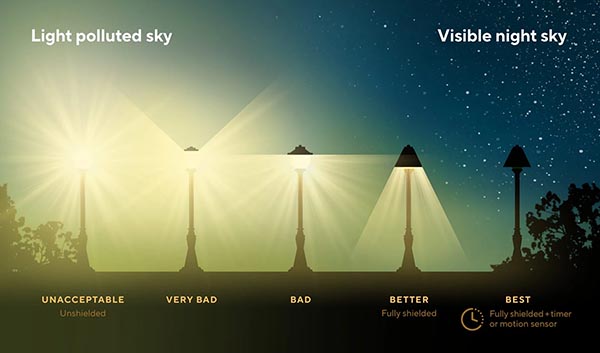
Simple Ways to Combat Light Pollution
1) Turn off outside lights when you aren’t actively using them.
Just like you turn off the lights when you leave a room, turning off outside lights when they aren’t being used can be an effective way of reducing light pollution. Motion detectors and timers can help ensure that the light is there when you need it.
2) Close your curtains at night.
Closing the curtains at night can help keep light inside the house instead of spilling out into the yard, which will benefit the pollinators and wildlife that call your yard home.
3) Choose outside lightbulbs that produce warmer colors.
Another easy thing to do is to change outside lightbulbs to ones that produce a warm white light rather than a bright white or cool white light. Warm white lights have a reddish or yellowish tint to them, while bright white or cool white lights have a bluish tint. Blue light travels further and has been shown to be more disruptive to wildlife and pollinators than warmer lights. (Issues related to blue lights disrupting our circadian rhythms are why we are told we shouldn’t use mobile devices right before bed.)
4) Choose outside lights that are “fully shielded” and replace ones that aren’t.
Make sure that any lights you have outside point down and are what is called “fully shielded.” Pointing lights down puts the light where you need it – on the ground, not in the sky. Fully shielded lights simply direct the light down and block light that would otherwise go up into the sky. Think of it as a lampshade for your outside light.
Summary
Turning off lights and changing light bulbs or light fixtures may not be the first things we think of when it comes to creating a thriving backyard ecosystem, but those actions can make an important difference. Decreasing the light pollution around your home will not only benefit the environment but will also benefit you because you’ll be able to see better without all the excess glare and will save money because you aren’t paying to light up the sky.
If you would like personalized help creating your own pollinator and wildlife habitat, then we encourage you to check out the Backyard Ecology™ Community.
There’s lots of great “big picture” information available about creating pollinator gardens or larger habitats for pollinators and wildlife. What’s lacking are opportunities to say, “This is what I want to do. This is what I’m struggling with. How do I make it work on my property?”
That’s part of what the Backyard Ecology™ Community offers its members every day.
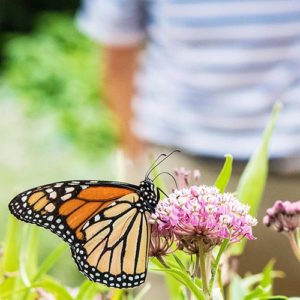
Thank you!
These amazing individuals go above and beyond every month to provide financial support which helps us create so much free content for everyone to enjoy and learn from.
Julie Krygier, Lizabeth, Russel Furnari, Crystal Robinson, Karen Veleta, Kevin B, Sally Mirick, Crystal Dyamonds, Mitchell Bell, Laura Hunt, Sue Ann Barnes, Adrienne Richardson, J. Adam Perkey, Ariel, Cara Flinn, David Todd, LaVonne Fitts, Cathy, Michael, Tom Winner, Eric Fleming, Julie, SB H, Christopher Scully, Craig, Rachel Antonucci, Melissa Egbertson, Switzy, CotswoldsCottageMA, Vilma Fabre, Pia O Nomata, Tyler, Linda McNees, HerculesBiggerCousin, Patrick Dwyer, Lilith Jones, and John Master.
Backyard Ecology™: Creating thriving backyard ecosystems that you can enjoy and be proud of
We created Backyard Ecology™ to help you confidently create pollinator and wildlife habitat that you can enjoy and be proud of. Because nature isn’t just “out there.” It’s all around us, including right outside our doors.
Our focus on the eastern U.S. means that the information we share is applicable to you and where you live. Join us as we ignite our curiosity and natural wonder, explore our yards and communities, and improve our local pollinator and wildlife habitat.

Backyard Ecology™’s Guiding Principles:
🦋 Curiosity: Nature is fun, interesting, and worth exploring. We will never know everything. Answers lead to more questions. That’s half the fun.
🦋 Balanced: You don’t have to choose. You can support nature AND have a beautiful property that you can enjoy and be proud of.
🦋 Science informed: Habitat creation and management should be based on the latest scientific research available. This is true regardless of whether you’re working in a small garden or on hundreds of acres.
🦋 Stewardship: Anyone can make a positive difference in the natural world and leave an ecological legacy on their property.

Leave a Reply